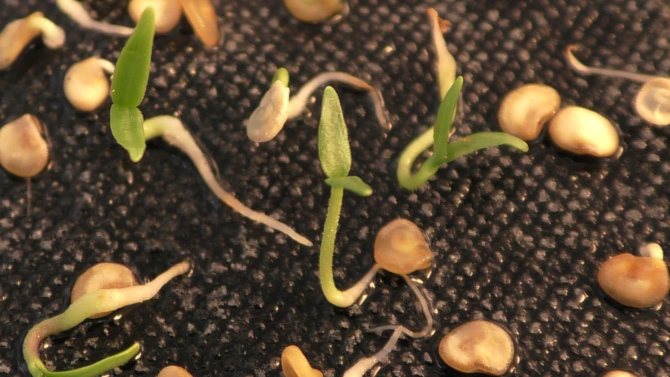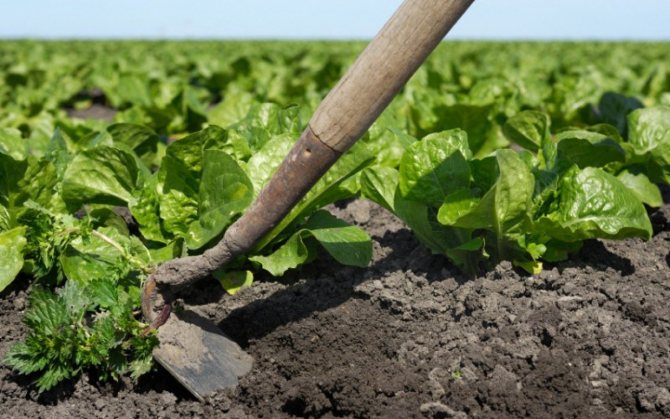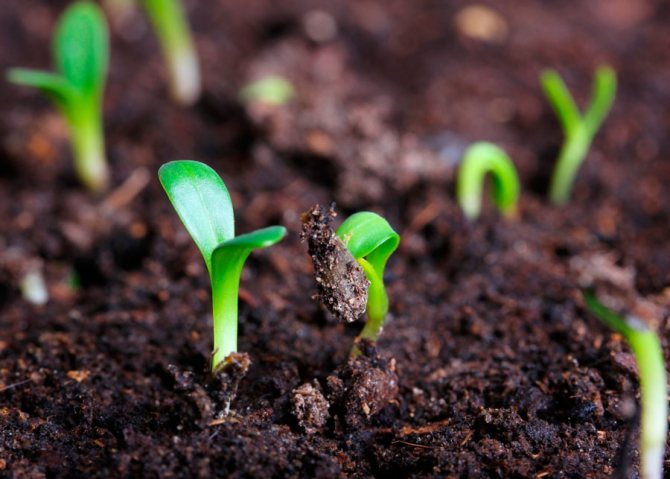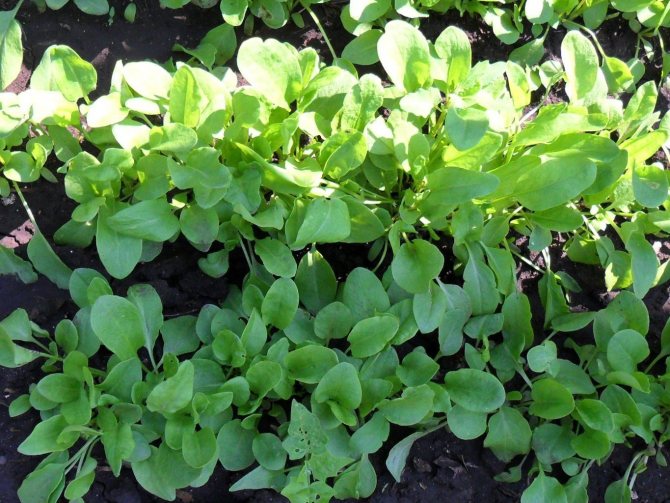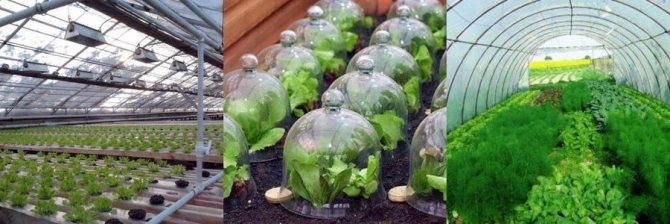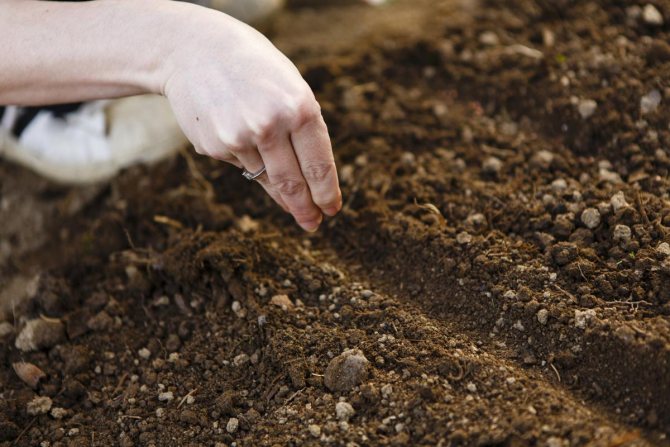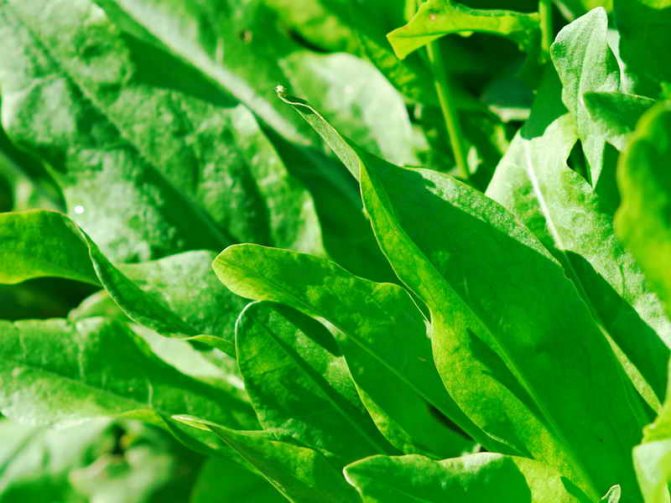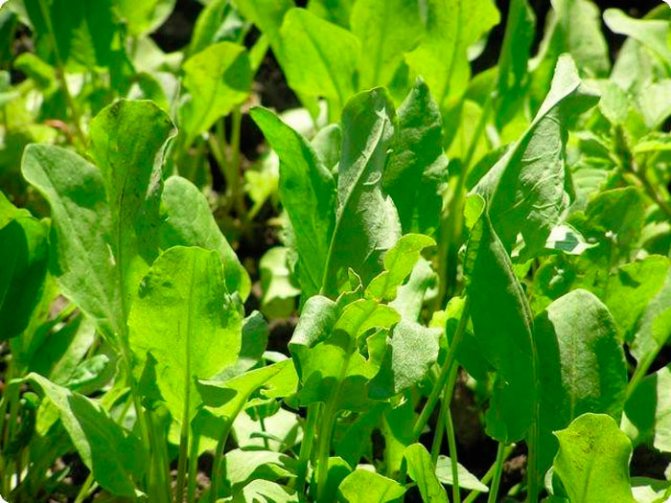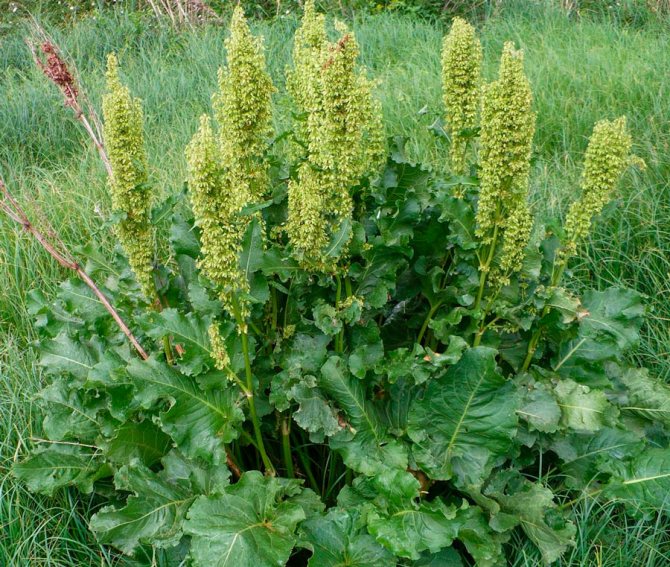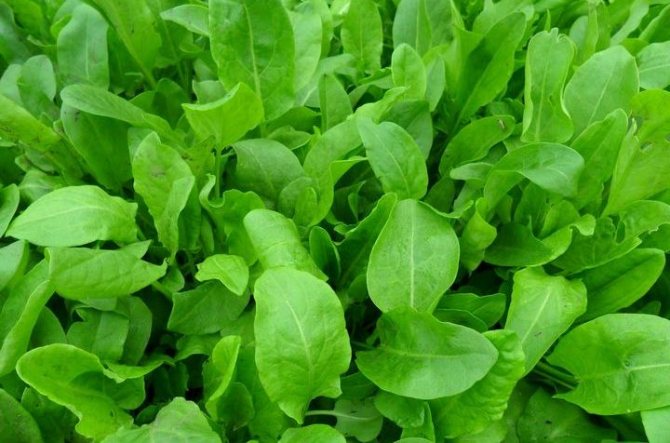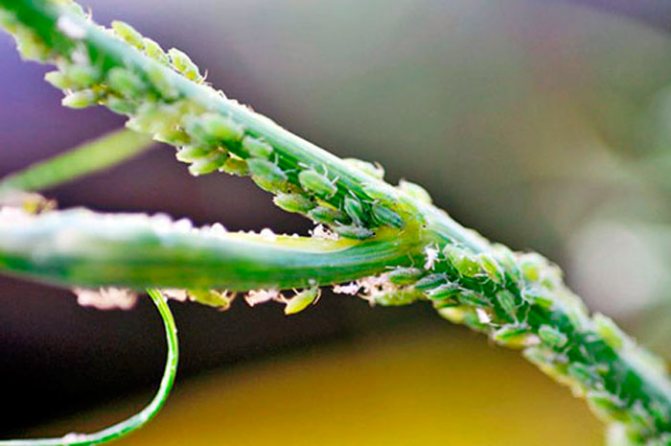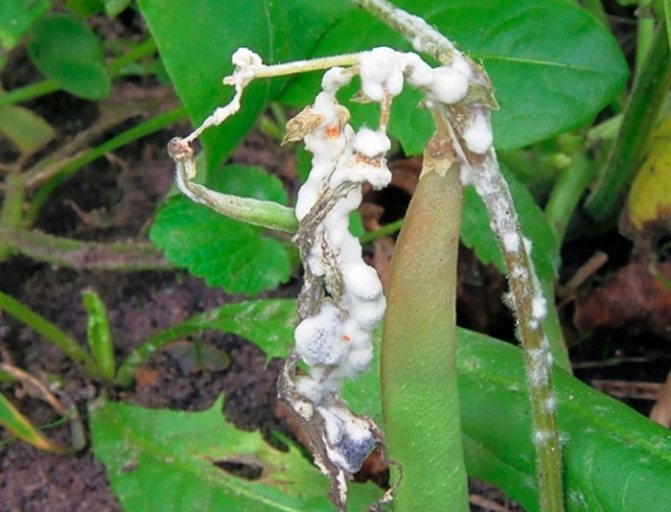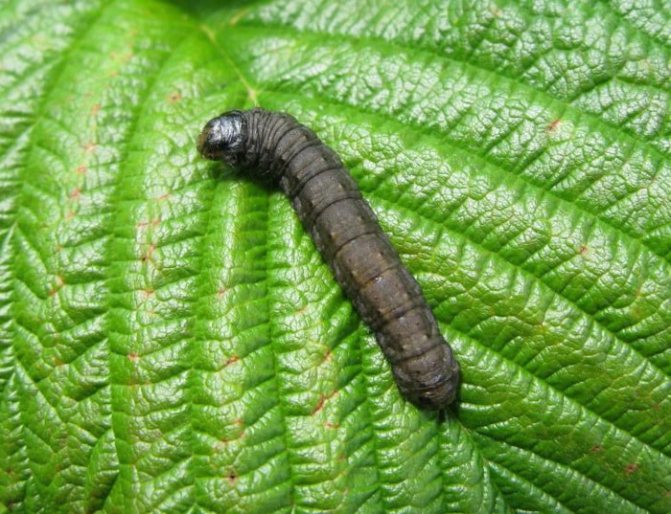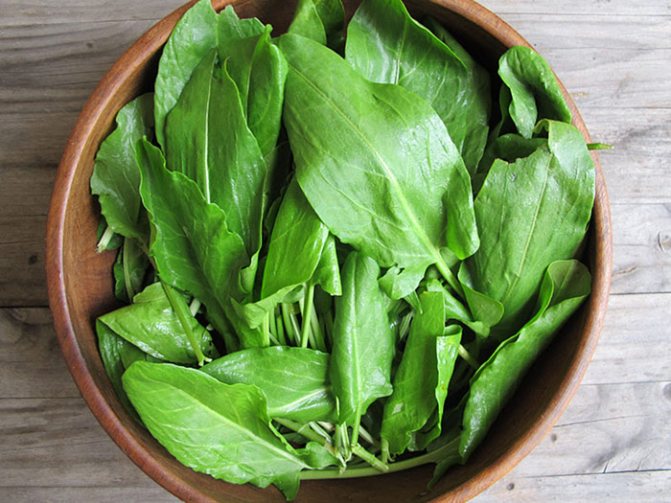Sorrel (Rumex) is a perennial herb. It has been cultivated since the Middle Ages, in Russia for a long time it was considered an ordinary weed, therefore, it began to be grown as a garden crop in recent centuries. The root system of the plant is pivotal, the fleshy root penetrates deeply into the soil. The leaf plates are large, long, gathering in a dense basal rosette.
Sorrel is one of the earliest vegetable crops, a breath of freshness after a long winter cold, a storehouse of useful elements. Green leaves reach for the sun as soon as the snow melts. In May, the first harvest can already be harvested - the length of the leaves reaches about 10 cm. During the season (harvesting should be completed in July), 4-5 cuts are carried out with an interval of 10-15 days. Then the leaves become coarse, the concentration of oxalic acid becomes high, which is not very useful for humans.
When to sow sorrel outdoors
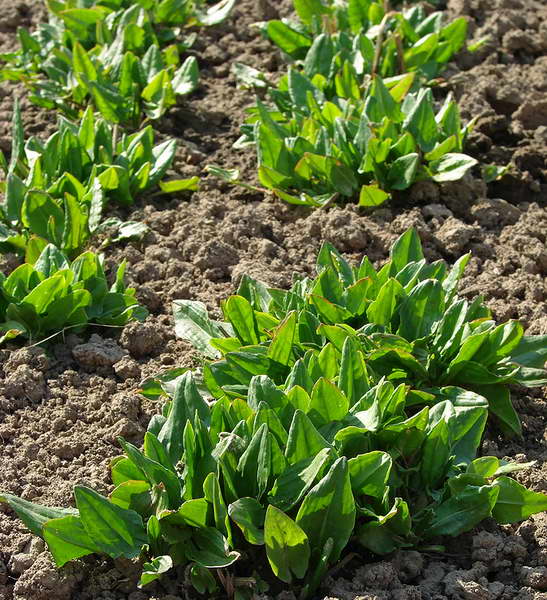
When to plant sorrel in spring and before winter sowing dates
The plant is cold-resistant, its seeds begin to germinate at +3 ° C: growing seedlings is not required, you can immediately sow in open ground. When to plant sorrel?
There are three optimal sowing dates:
- Early spring - Sow as soon as possible to till the soil. Get the harvest in the same season.
- Summer sowing - Carry it out after harvesting early-ripening vegetables (June). Sorrel will have time to root well before the onset of the winter cold
- Sowing before winter late autumn (late October-early November) - wait for severe cold weather with night frosts and dry weather, as the seeds should not have time to germinate before winter. When sowing in winter, it is useful to fill the rows with high-quality humus, mixed in half with garden soil.
In the latter two cases, the sorrel will delight you with the first green harvest next spring.
It is best to sow sorrel in the spring when the soil is saturated with moisture. With summer sowing, regular abundant watering of the garden will be required.
Soil preparation
It is necessary to prepare the soil where sorrel seeds will be planted in spring with the onset of autumn. The selected place must be loosened by 10 cm, and buried, such a measure will allow unnecessary plants to germinate. A little trick is that with the onset of frost, the weeds will die, and next year the gardener will have fewer problems with weeding. For weeding and loosening the soil, we recommend using the Strizh self-sharpening cultivator.
Then the bed is fertilized with humus. The calculation, fertilization is as follows: for one square meter of soil, 5.5 - 6.1 kg will be needed. After a few days, another digging is carried out, deeper than the first. If weed roots are found, it is recommended to remove them.
Before you start planting sorrel in the spring, it is necessary to thoroughly loosen the ground, add mineral fertilizing, among them there must be:
- ammonium nitrate - 20 - 30 g;
- potassium chloride - 10-15 g;
- humus, peat - 150 gr.
The most favorable time for planting is April. But many plant lovers know that sorrel tolerates frost well, which means that you can sow seeds much earlier.
Interesting fact.A very good harvest is obtained from early plantings, because the soil will contain a sufficient amount of moisture, which remains after the snow has melted.
How to prepare a bed for planting sorrel, look at the video:
How to plant sorrel seeds
- Sow in rows, keeping a distance of 15-20 cm between them.
- In the spring, plant the seeds to a depth of 8 mm-1 cm. Amicable shoots will appear in 8-11 days, and if the crops are covered with foil, they will appear in 3-5 days. After a week of growth, thin out, leaving a distance of 5-7 cm between the plants.
- When sowing in summer, the soil must be saturated with moisture - a couple of days before sowing, water the bed well so that the soil is well wet.
- When sowing before winter, the bed is prepared in advance so that the soil settles and the seeds are not washed away by precipitation into the deep layers of the soil.
It is necessary to sow as little as possible, the germination of seeds is excellent, and after germination of seeds, the seedlings must be thinned out so that the plants do not clog each other. Ideally, leave at least 2-3 cm between individual plants so that the sorrel is large and beautiful.
Ideal landing site
Everyone can grow sorrel in their garden, because there is nothing difficult in this. You need to start by choosing a site, with the right approach, a rich harvest is guaranteed. The best option is humid places, but without strong water stagnation. It can be like loam, sandy loam fertilized with humus. Plants do well in peat bogs with drainage.
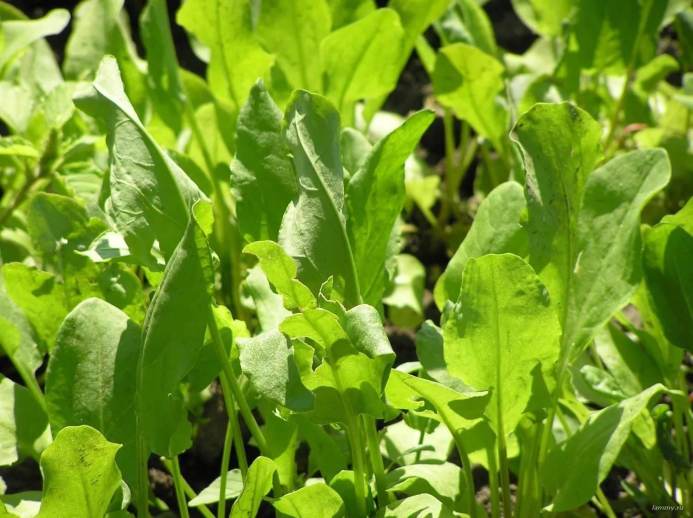

How to plant sorrel seeds in spring
Care and cultivation of sorrel in the open field
How to grow sorrel outdoors:
Watering
- Water regularly and abundantly during active growth.
- In hot weather and dry soil, the ground part will actively develop, which will provoke earlier unwanted flowering (under normal conditions, it should occur in the second year of growth).
To maintain the quality of green products, the stalks should be removed.
Top dressing and mulching
- In early spring, loosen the soil, mulch the area to maintain the moisture level, add top dressing (1 bucket of mullein solution in a ratio of 1 to 6 with the addition of 10-25 g of potassium-phosphorus fertilizers per 1 m²).
- To maintain the yield, after each leaf cut, you should feed it with a complex of mineral fertilizers, focusing on the nitrogen component.
- In autumn, add 4-5 kg of humus or compost to the aisles.
Sorrel should be cultivated in one place for no more than 4 years, then the planting must be renewed.
Culture care
Coriander planting and care in the open field
Proper care of any plant is the key to a healthy and abundant harvest, as well as longevity.
The main stages of growing sorrel:
- Regular loosening and weeding. Weed grass greatly inhibits the growth of sorrel. Ideally, these two procedures should be done on an ongoing basis. This can be quite time consuming. Mulching with peat after irrigation reduces the amount of weeding, as it is difficult for weeds to break through the mulch layer. In the spring, it is imperative to loosen the aisles weekly, since in soft soil the roots receive more nutrition and air, from this the green part of the plant develops better;
- Watering. Sorrel is a very moisture-loving plant. The frequency and amount of irrigation depends on how much precipitation falls in the region. When the air temperature is close to + 30˚C, the plant stops developing and shoots an arrow. After that, the leaves lose their taste and become rough. In this regard, it is necessary to constantly monitor the state of the land. During dry periods, sorrel should be watered with abundant water. In this case, it is necessary to observe the measure so as not to flood the plant, since stagnant water is detrimental to the root system. At the end of the season, the need for watering disappears, the plant has enough moisture after natural precipitation;
- Top dressing. Sorrel responds well to all types of fertilizers. It is important to know that you need to fertilize the plant based on the weather conditions. For a dry period, it is better to use liquid forms or a solution; in a rainy period, dry mixtures (powders, granules) are more suitable. Nitrogen components allow the plant to grow leaves, potassium and phosphoric components fill it with taste and useful substances. Organic fertilizers have a firming effect. Top dressing can be alternated. Consumption rates are calculated according to the instructions in the package. Organic fertilizers are applied most often in spring or autumn, the application rate is 6 kg / m2. Mineral dressing can be applied after each cut;
- Mulching. Basically, this procedure is aimed at protecting the plant from weeds and additional feeding. In this case, the mulching layer can act as a protective barrier against frost. Peat, dry foliage, or humus are best mulches. It is not necessary to lay mulch under the very trunk, since it will interfere with the free development of sorrel. A mulching layer 1-2 cm thick is laid out in the aisles. This method allows you to give additional nutrition to the plant and protects against adverse factors (weeds, abnormal temperature drop, pests).
- Growing nuances:
- If sorrel is planted in an illuminated area, it should be shaded from the sun at least during the hottest midday hours. To do this, you can create a canopy;
- With a lack of moisture, the sorrel releases a peduncle, from which the leaves become unsuitable for collection. In this case, it is important not to miss the moment and remove the arrow in time, then the crop will not lose its taste and softness;
- Sorrel grows well on one bed for 4 years. The maximum period is 5-6 years (depending on the quality of care). After this period, you need to transplant the sorrel to another place or sow a new one.
- Diseases and pests. If agrotechnical practices are followed, sorrel is not attacked by insects and pests. However, a violation of the irrigation regime, the absence of a mulch layer, and neglect of weeding can provoke the appearance of the sorrel beetle. The first sign of the presence of this parasite is the appearance of holes in the sheets, discoloration or complete drying out. As measures to combat this parasite, folk methods are excellent: spraying the leaves with garlic or soapy water, sprinkling with ash and tobacco ash. It is best to carry out such treatments in spring and autumn, since processing during the growing season impairs the taste of the leaves. In rare cases, sorrel is attacked by sawflies and winter moths. Soaking the branches of Solanaceae (tomato, potato), followed by processing with the resulting infusion, helps well against them. When aphids appear, sorrel should be sprayed with onion peel infusion. If folk remedies cannot destroy pests, you can use chemicals (Fitoverm, Anabazin sulfate). Sorrel is practically not susceptible to fungal diseases, but sometimes it can be affected by rust and downy mildew. In this case, it is necessary to carry out a chemical treatment with Fitosporin. You cannot eat such leaves;
- Harvest. Full maturation occurs in 60 days. If you plant sorrel in spring, then in June you can completely remove the leaves. For summer and autumn planting, harvesting begins after the snow has completely melted. The collection is carried out in the morning, when the leaves are as juicy as possible. It is better to use a sharp knife for cleaning. The cut is carried out every 15-20 days. First of all, you need to cut off the largest side leaves. Young tender leaves, located closer to the core, are best left. They may still grow. In the autumn, you need to track the forecast of the upcoming frost. 4 weeks before the expected date, you need to leave the plant without pruning. During this period, the sorrel needs to rest and gain strength before the coming winter;
- Seed preparation. You can prepare seed material yourself. To do this, during the season, you need to identify several bushes for reproduction. These plants cannot be pruned. In June, they will bloom with light pink inflorescences. After a month, the seeds will begin to ripen and turn brown. Ripe inflorescences need to be cut and combined into small bunches. For 1.5 weeks, the seeds should ripen in a dry, ventilated area. When the bundles are completely dry, they need to be rubbed in the palms, removing debris. The resulting seeds must be put in paper bags (or simply wrapped in a blank sheet of paper). Store seeds in a dark, dry place. The shelf life is 4 years, therefore it is recommended to make a mark on the packaging about the year of harvest;
- Leaving in the fall. At the end of the season, old leaves should be removed. To help the plant gain strength, you can fertilize with a solution of mullein and water in a 1: 7 ratio or add compost (6 kg / m2).
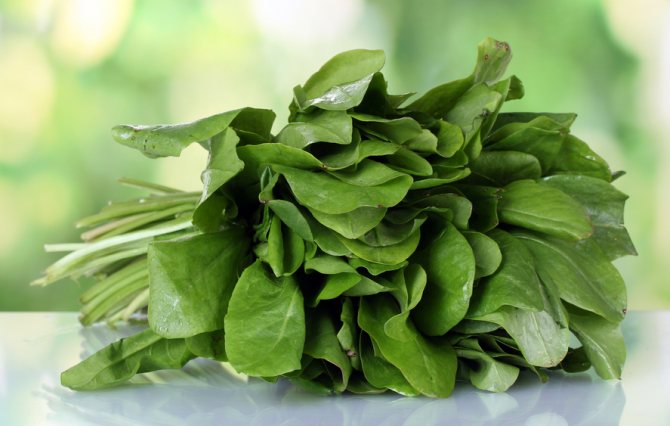

Removing old leaves
The benefits of sorrel
Sorrel is rich in minerals (potassium, iron), proteins, sugars, organic acids (oxalic, malic, citric), contains vitamin C and carotene. In folk medicine, sorrel is used as a choleretic, hemostatic agent, the juice of the plant has an antiseptic effect, improves metabolism, and normalizes the stomach. Do not abuse it, as acids can have a negative effect on the kidneys.
Fresh sorrel leaves are used in the preparation of salads, sauces, mashed potatoes, everyone's favorite "green borscht", it retains its beneficial properties both fresh and canned.
Diseases and pests


Powdery downy mildew - spots with a gray bloom appear on the back of the leaves. You can defeat the disease by spraying the leaves with Bordeaux liquid. Can be treated with Fitosporin.- Powdery rust - with this disease, small yellow-brown spots with dark spores appear on sorrel. Can be sprayed with such products as: Fitosporin, Plangiz, Copper sulfate.
- Sorrel aphid - sucks juice from the plant. This insect is from 2 to 3 mm in size, black in color with a shiny, black bloom. If the crop has already risen, you need to scatter tobacco ash around and on the bushes. And also water the bushes with steep onion peel infusion. In autumn, after cutting, pour with an infusion of herbs that have a bitter taste and strong smell.
Aphids are afraid of dusting the leaves with ash. - Sorrel sawfly or scoop... The butterfly is 2 to 3 cm in size. The caterpillar of the scoop grows up to 5 cm, maybe even more. The color, like butterflies and caterpillars, can be gray, green, or brown. You can fight them by luring the scoop - butterflies to bait - traps (malt, honey). You can harvest caterpillars directly from the leaves. Eggs can be fought by sprinkling dry wood ash on the leaves.
It is necessary to weed the weeds in the earliest stages of their growth, as well as to loosen the soil. It also helps in the fight against sorrel diseases and pests.
In this article, we have learned how to grow and care for sorrel all year round. After all, it can be grown not only in the garden, but also on our windowsills in winter. Sorrel is a rather unpretentious plant and it is not difficult to grow it., but he also needs care and attention.
What are the best varieties for growing?
To grow sorrel from seeds, you must use the following varieties:
- Large-leaved... This is an early ripening variety. It has oval leaves of a pale green color. Has a pleasant taste, medium acidity.
The variety is high-yielding and frost-resistant. - Ordinary garden... The most popular sorrel variety.
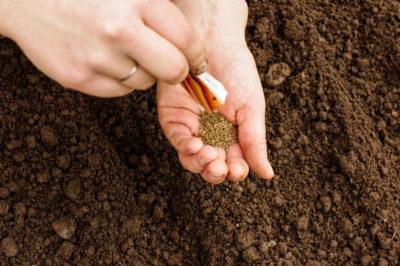

Its leaves are spiky and dark green in color. The variety is characterized by resistance to cold and high yields. - Altaic... It has smooth and sharp leaves that grow on a straight rosette. The variety is resistant to low temperatures.
- Broadleaf... The leaves are large and have a sour and delicate taste.The advantage of the variety is its resistance to drought and heat, as well as its high yield.
- Lyons... The leaves are large, dense and wide. The variety is frost-resistant.
- Belleville... It has leaves of a slightly sour delicate taste. The variety is early and high-yielding. He is afraid of low temperatures.
Selection and preparation of material
Photo and description of how healthy seed should look like
Healthy seeds are oblong and dark brown in color.
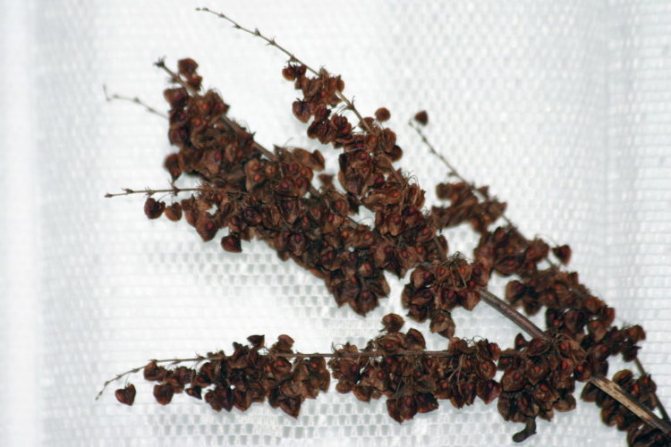

Where to get?
How to collect yourself To collect sorrel seeds, you must follow the following instructions:
- The leaves of the selected plant are not cut at all.
- The culture blooms in May, and the seeds ripen in the first half of July.
- Sorrel panicles, on which seeds are formed, turn brown. After that, they can be cut, tied into corollas and dried for 10 days.
- After that, you need to thresh the seeds by rubbing the panicles with your hands and removing debris.
- The seeds collected in this way are suitable for use for 4 years, but only if they are stored in a dry place.
Can i buy and where?
You can buy planting material in a specialized store. or order online. You can buy sorrel seeds in Moscow and St. Petersburg at a price of 10-18 rubles.
When choosing seeds, you must carefully study the packaging, paying attention to the following nuances:
- marking;
- shelf life;
- sowing time;
- timing of planting in the ground.
Quite often, this information on the packaging is misinterpreted. This happens due to an incorrect translation, as a result of which climatic conditions are not met.
How to process and should you soak before the procedure?
In order for the planting material to fully ascend, it must be properly prepared, observing the following procedure:
- Soak the seeds in warm water, after wrapping them in cheesecloth. Leave them on for 2 days. Due to the fact that the seeds absorb all the moisture, they will rise faster.
- Various nutrient fertilizers can be added to the water. This will allow the plant to be stronger and more resistant to external stimuli.
Having done these simple manipulations, you can get 100% germination of sorrel seeds.

